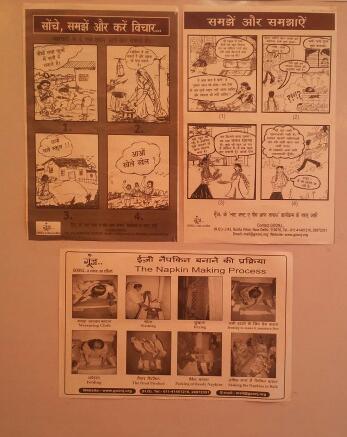The basic facilities that the government promises is food, shelter and clothing; but so many a times in the midst of fulfilling the food and shelter criteria, they forget about the clothing aspect which actually is one of the most important of them all. But one such NGO realized it’s importance and took it in their hands to ensure that this aspect was taken care of.
Goonj, a non-governmental organization started by a visionary named Anshu Gupta, aimed at making clothing a major concern. It was on a winter night, when Anshu Gupta on a freelance assignment interviewed a man Habib, a professional unclaimed human body collector. Habib’s little daughter told Anshu, “When I feel cold during the night, I hug the dead body and sleep. It does not trouble me, as it doesn’t turn around.” This moment made Anshu feel how extremely privileged he was and gave him an insight into the importance of clothing as a basic need.
Soon after that, Anshu along with his wife Meenakshi who quit a highly paid job, started Goonj. Initially they started out with clothes from their own house and slowly found other sources . They are in 22 states with a volunteer base of around 200. They have provided clothes to 100 villages in Bihar, a few others in Chattisgarh, Orissa and West Bengal.
One of their first initiatives was Vastra Samman which simply means providing clothes to needy people but with dignity by making them work for each of cloth they get. The work given would be in and around the village so that each one of them feels like they have earned it.
While carrying on with this initiative in rural areas, few of the volunteers happened to talk to some of the women and found that many of them use dirty pieces of cloth during their menstrual cycle .As there is a deficiency of clothing in rural areas, women tend to use any type of cloth they can get their hands on. Since their birth they have been told that it is a taboo talking about the subject, they are accustomed to think that getting their period is a bad thing. Hence they use the dirtiest cloth they can find. Krishna, a volunteer of Goonj mentioned that women of the same family tend to share the same piece of cloth. This not only is unhygienic but can also later become a major disease.
So what the Goonj team did was they googled sanitary napkins and only found information about fancy disposable products from different countries. Be it self-help groups, the health sector or even corporate CSR, nobody had talked about the subject. After a lot of research, they came up with an initiative called “Not Just a Piece of Cloth” It was towards women living areas, providing them with sanitary napkins which are made of cloth. When I asked Krishna ji why cloth and not a sanitary napkin, He replies saying, “Lot of these yojanas come up with low cost sanitary napkins, but what people don’t understand is that they use bleach to make it look white which is harmful; then they use a plastic packet to cover it which is also harmful in villages where people burn their waste. So better than that is to provide women with a clean piece of cloth which they can use at least 5-6 times and not having to worry about getting an infection.”
The team of Goonj ties up with a local NGO in these rural areas, then for about four to five months they conduct workshops where they talk to women about menstruation and what kind of material they use. Initially the women are a little embarrassed to talk about it but as the workshop proceeds, they feel confident enough to openly talk about it, and many of them even go individually to discuss the problems that they face. The beauty of the workshop is that it is conducted mostly by male volunteers. During the workshop, they give them a demonstration on how to make sanitary napkins out of recycled cloth and then they give them a recycled bag which includes three usable sanitary napkins.
The process involved in making sanitary napkins are, first they remove any buttons or pins on the cloth, then they wash it and dry it in the sun so as all the germs get washed out. Then they cut the cloth into a certain dimension and the left over cloth from each cut out cloth is put in the middle which is then folded to make a pad.

I asked Krishna ji about the feedback they got and he said, “In some of the places, adivasi women returned it because they didn’t have underwear to hold it. So what we did was, we started making underwear’s out of over-sized branded t-shirts we got from various people as contribution. Generally branded t-shirts have a longer durability and each underwear can be used twice.” He adds saying, “Our biggest aim is to educate people about this field and ensuring that they understand the seriousness attached to it. In many villages, after we teach them the technique of making sanitary napkins , many women use petticoats , sheets or any other cloth which they collect and keep safely and when they go back to visit them , they come up with better patterns and designs which are colour co-ordinated.”
There are very few NGO’s that are willing to take up this subject and do something about it but the vision Anshu Gupta had changed the lives of so many women around India making them more confident to talk about the subject and also by making them self-sufficient. He had a dream and he stuck to it. How many of us actually do that? Especially if it’s for someone else.
By Aneesha Menon, Fellow , India Water Portal, Arghyam
For full coverage by India Water Portal of the Nirmal Bharat Yatra, click here.
/articles/nirmal-bharat-yatra-different-mindset-different-thought-story-goonj